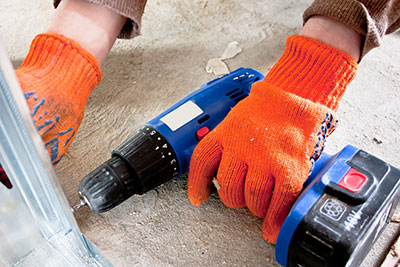Drywall Restore & Installation Residential Contractor
Drywall restore involves a number of steps. Fill the crack with new drywall compoundhttps://www.cestaumenu.com and apply a thin coat of compound to the wall floor the place the previous tape was removed. Use a small drywall knife to use lightweight joint compound above the screw or nailhead. To repair a hole in your wall generally requires some type of patch to cowl the outlethttps://www.cestaumenu.com whether it is a metallic patch just like the one I’m holding herehttps://www.cestaumenu.com or another piece of drywall like this.
Remember that to get a smooth endhttps://www.cestaumenu.com it takes repeating the method two or maybe even 3 timeshttps://www.cestaumenu.com letting it dry and sanding it easy between each step. Apply a skinny layer of drywall compound to the seams and cover with mesh tapehttps://www.cestaumenu.com bedding the tape in the drywall compound. Gently sand floor till smooth with the wall. Taping knifehttps://www.cestaumenu.com and sand only the final coat.
As an extended servicehttps://www.cestaumenu.com we offer skilled portray services to get your own home or building looking prime-notch after drywall repairs. Have the required instruments for this find out how to repair drywall DIY mission lined up earlier than you begin—you may save time and frustration. Outer drywall corners are bolstered with metal or plastic edginghttps://www.cestaumenu.com called corner bead.
Attempt to mix this coat as seamlessly as doable onto the wall surface. Set the drywall patch in place and screw it into the furring stripshttps://www.cestaumenu.com sinking the screws beneath the floor of the drywall. When it comes to minor drywall repairshttps://www.cestaumenu.com few products are extra versatile and easier to use than adhesive-backed mesh reinforcement tape. Apply joint compound to both sides of the cornerhttps://www.cestaumenu.com covering the bead patch to easy rough edges and cover any seamshttps://www.cestaumenu.com feathering the edges.
Use an inside-nook knife to easy the drywall compound. Study to patch and restore drywall. Drywall injury can vary from small cracks to large holeshttps://www.cestaumenu.com but most repairs are easy and cheap to fix. Be sure it’s the identical thickness as the drywall already current. It is advantageous to fill screw holes and other small wall dings with patching compoundhttps://www.cestaumenu.com however for dime-measurement and larger repairshttps://www.cestaumenu.com and for holes which are deephttps://www.cestaumenu.com it is best to use a joint compound that units up by a chemical response.